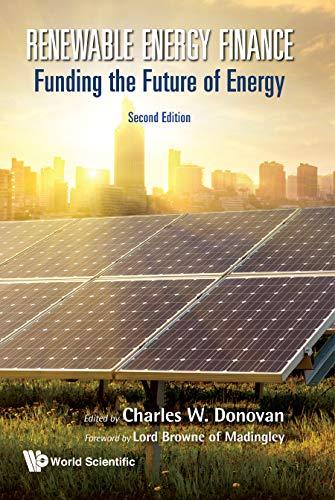Question
Problem Set 4 If you insulate your office for $10,000, you will save $1,000 a year in heating expenses. These savings will last forever. What
Problem Set 4
-
If you insulate your office for $10,000, you will save $1,000 a year in heating expenses. These savings will last forever.
-
What is the NPV of this investment when the cost of capital is 8%? 10%?
-
What is the IRR?
-
-
A project costs $5,000 at t = 0 and will generate annual cash flows of $750 for 10 years, starting at t = 1. The discount rate is 6%.
-
What is the NPV?
-
What is the IRR? (Write down the equation for the IRR and get the solution using
Excel or the calculator.)
-
-
A project costs $5,000 and will generate annual cash flows of $200 in the first year, $300 in the second year and $400 in the third year. The cash flow is then expected to grow at 3% every year forever. The discount rate is 12%.
-
What is the NPV?
-
Write down the equation for the IRR. Then find the IRR using Goal Seek in
-
4. Consider
Excel. (Note: The IRR function wont give you the right solution for this question, because the IRR function cant deal with perpetuities or growing perpetuities.)
the following cash flows:
C4 $22 +$20 +$20 +$20 $40
| C0 | C1 | C2 | C3 |
-
Plot the NPV function in Excel for discount rates between 0% and 40%, using 5% increments.
-
First create a column with the following values for the discount rate: 0%, 5%, 10%, ..., 40%.
-
Then calculate the NPV at each of these discount rates. You can calculate the NPV using the formula or using the Data Table feature in Excel.
-
Select the two columns (r and NPV) and go to Insert/Scatter to plot the NPV function.
You dont need to submit the Excel file simply paste the chart in the same Word file that includes the answers to the other questions.
-
-
How many IRRs does this project have?
-
Use the IRR function in Excel to find the IRR(s).
-
Would you invest in the project if the discount rate is 5%? 20%? 40%?
1
5. Here are the cash flows for two mutually exclusive projects:
C1 +$130
B $200 +$240
-
What is the IRR of each project?
-
At what discount rate are you indifferent between the two projects?
-
For what range of discount rates would you choose project A and for what range
of discount rates would you choose project B?
6. You are deciding between two mutually exclusive investment opportunities.
Project A requires an investment of $1,000 at t = 0 and generates a perpetual cash flow of $150 starting at t = 1.
Project B requires an investment of $1,000 at t = 0 and generates a cash flow of $60 at t = 1. After t=1thecashflowgrowsattherateof4%inperpetuity(sothecashflowatt=2is4% higher than the cash flow at t = 1, the cash flow at t = 3 is 4% higher than the cash flow at t = 2 and so on).
-
Which investment has the higher IRR?
-
Which investment has the higher NPV when the cost of capital is 6%?
-
Which investment should you pick (if any) if the cost of capital is 6%?
-
For what range of values for the opportunity cost of capital would you make the
opposite decision, compared to part c?
Step by Step Solution
There are 3 Steps involved in it
Step: 1

Get Instant Access to Expert-Tailored Solutions
See step-by-step solutions with expert insights and AI powered tools for academic success
Step: 2

Step: 3

Ace Your Homework with AI
Get the answers you need in no time with our AI-driven, step-by-step assistance
Get Started


